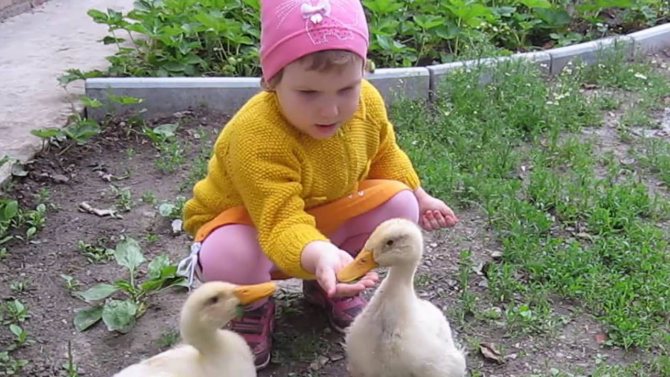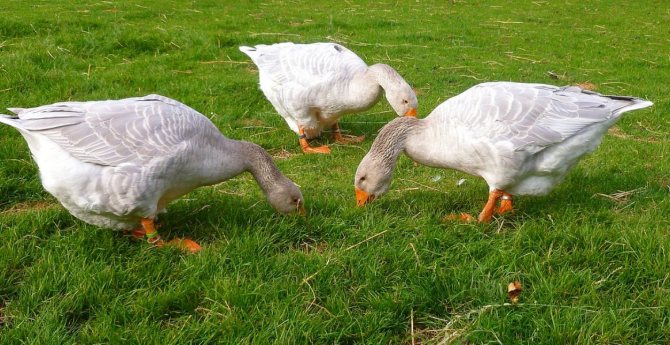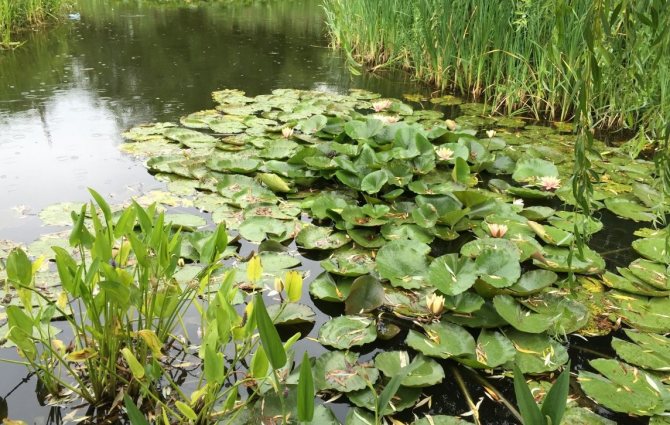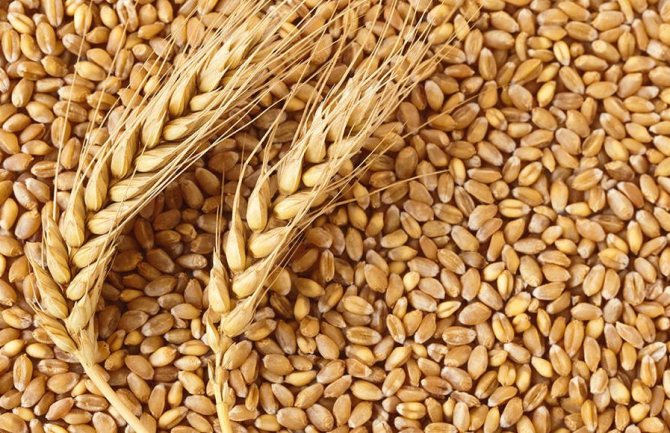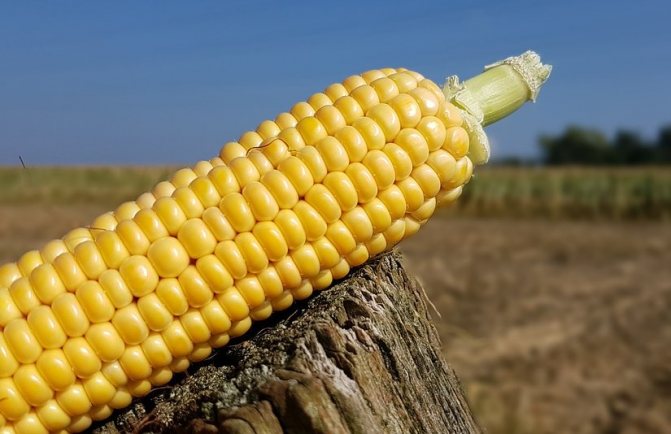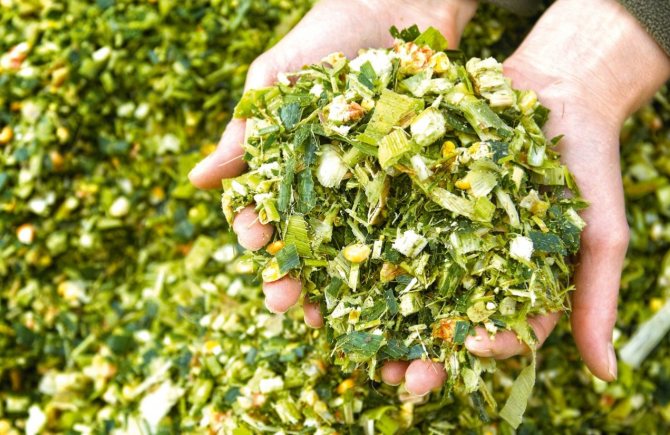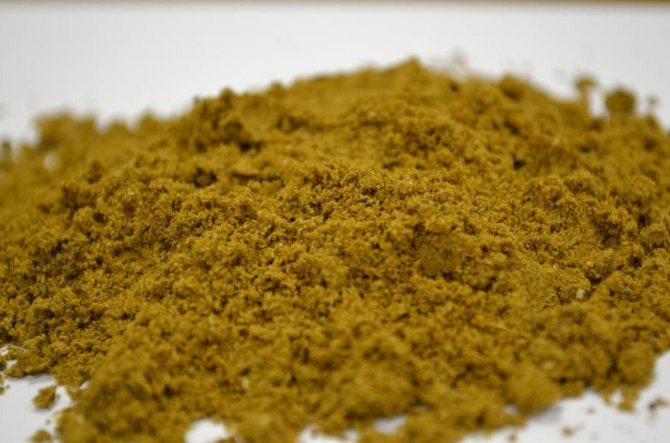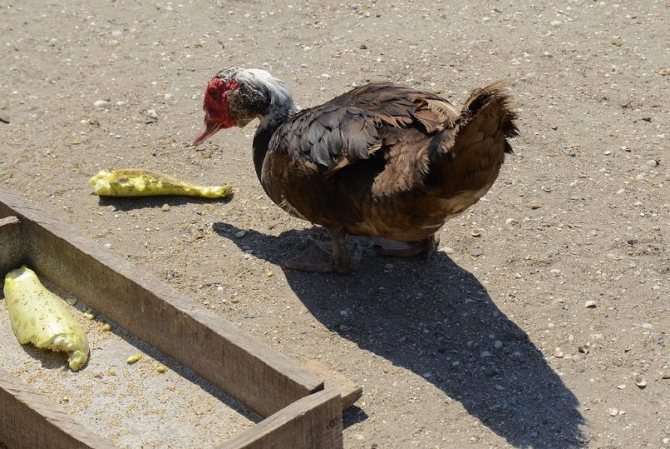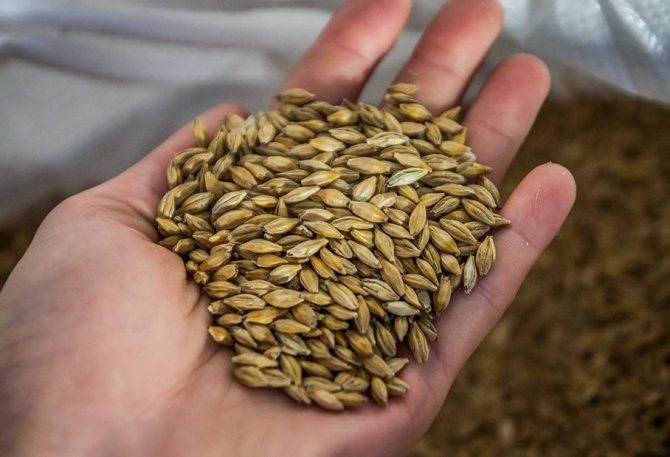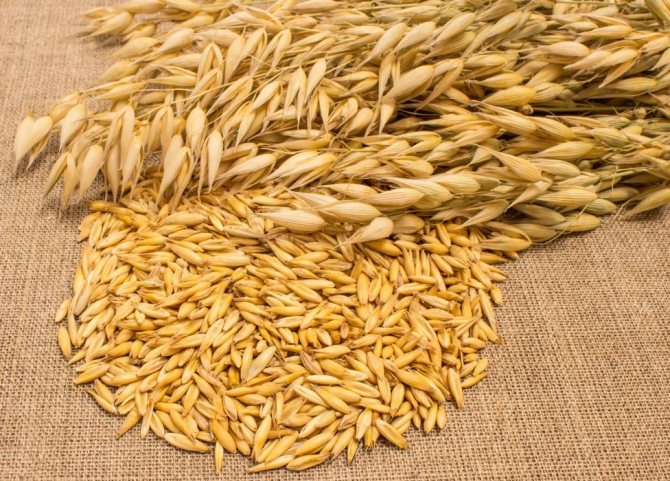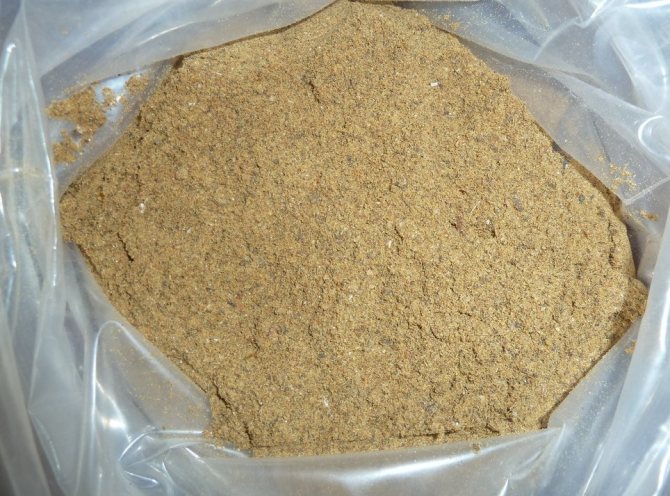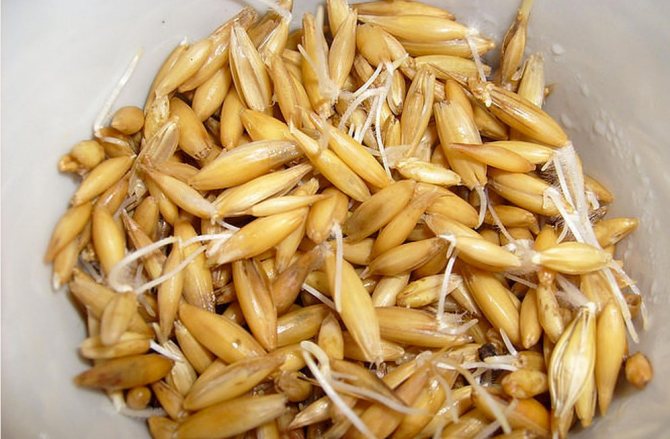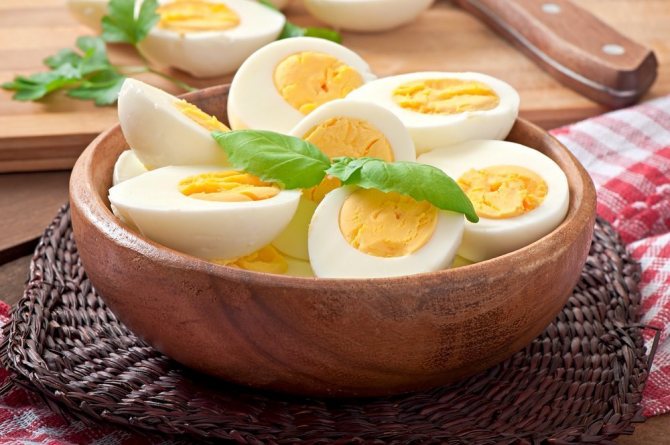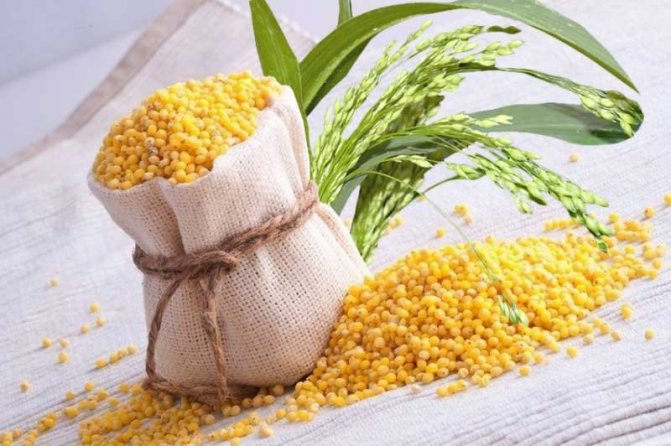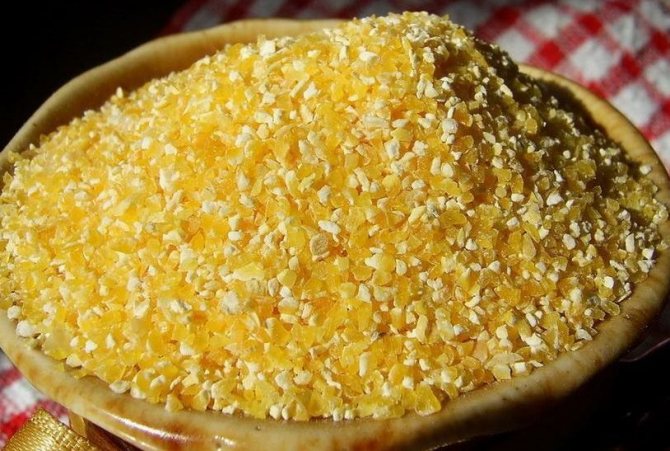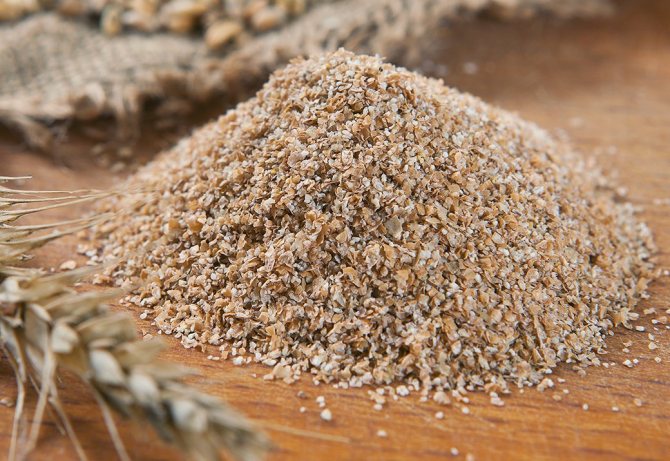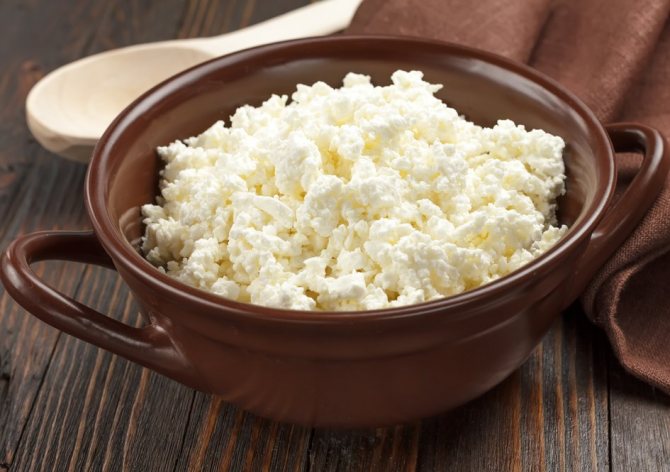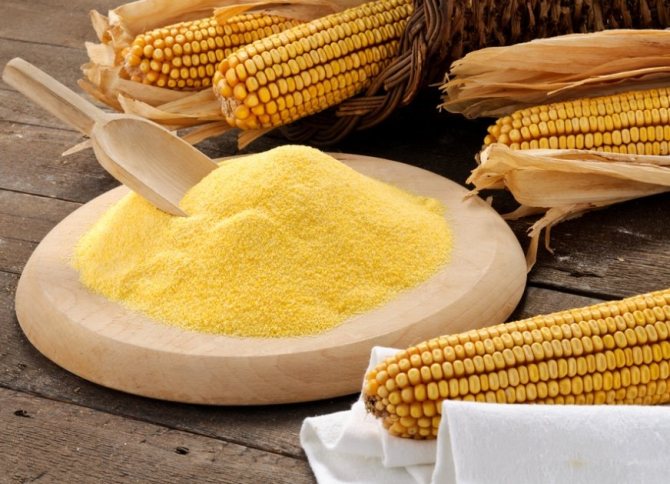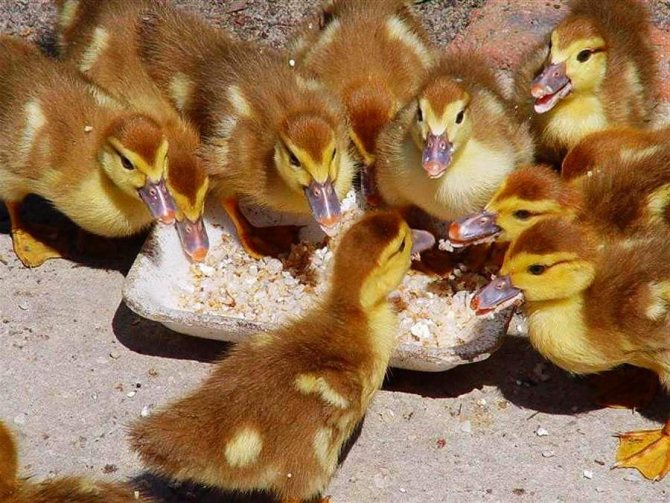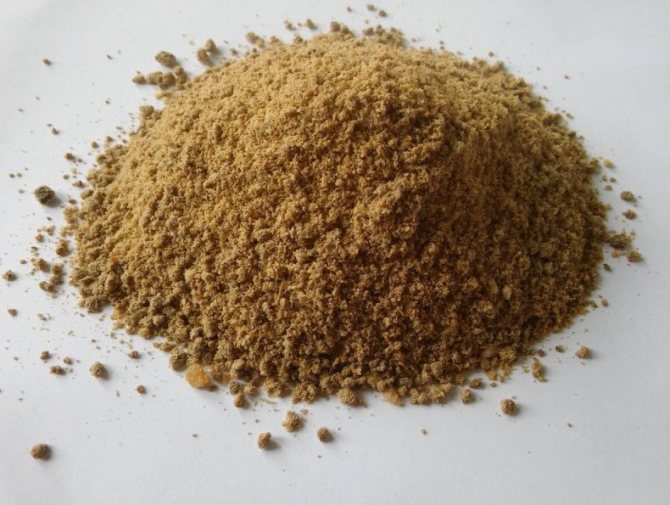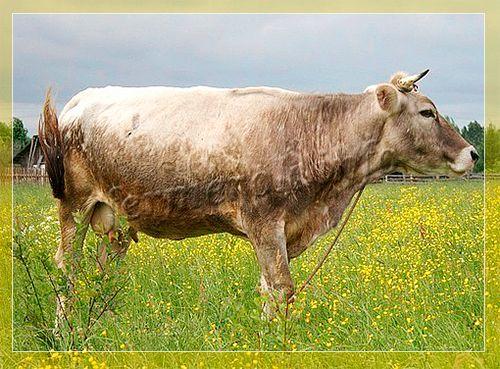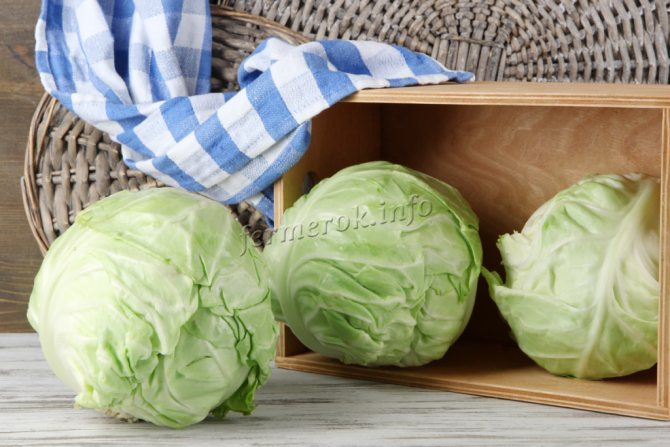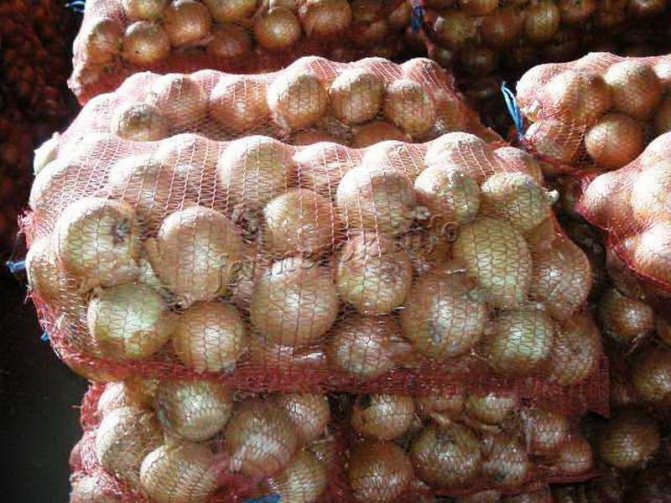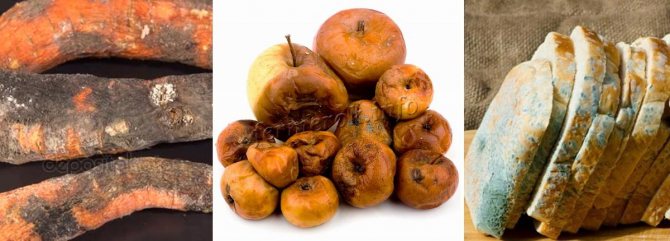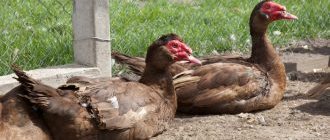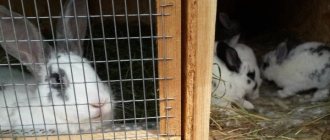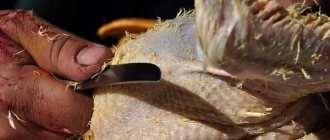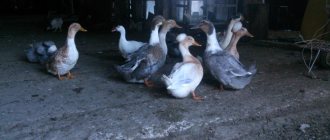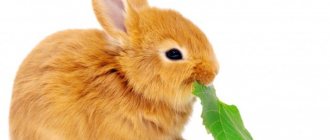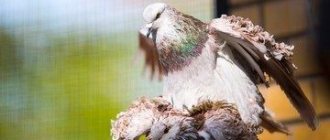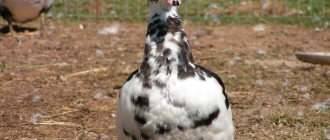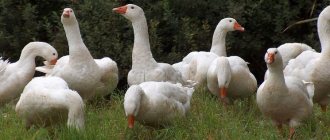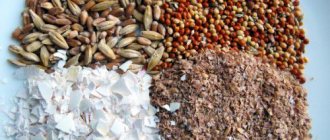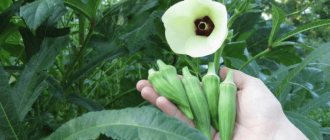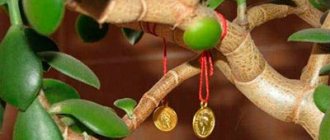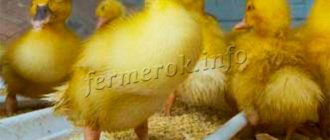Juicy feed
In the warm season, you can release ducks to pasture or a pond. So they will be able to get some of the food on their own, which will reduce the cost of buying juicy feed. At the time when the individuals are kept in the pen, it is necessary to prepare the greens in advance.
Juicy foods include:
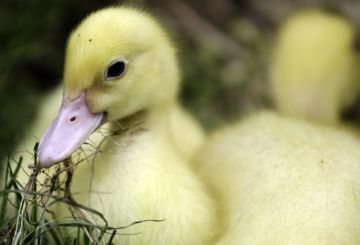
- Aquatic vegetation is the main food for ducks in natural conditions. At home, you can release birds into a pond where they can get food. When kept in a pen, the farmer is advised to collect the duckweed in the pond on his own. Adults need 0.5 kg of aquatic vegetation per day, and young animals need no more than 15 g from ten days of age.
- Greens - clover, beet tops, nettles, meadow grasses are suitable. The greens need to be chopped and checked for the absence of poisonous plants. Grass should make up up to 20% of the birds' daily diet. In summer and autumn, you need 130-150 g per head.
- Vegetables - boiled potatoes can replace a third of the volume of grain food. Grated carrots and pumpkin should be added to the feed. We must not forget about kale, which contains a huge amount of amino acids. For one bird, 100 g and 140 g of vegetables are enough in summer and winter, respectively.
In the household, ducks also eat leftover vegetable dishes that have not had time to go bad.
Features of feeding young animals
In order for the duck livestock to have good health and be resistant to a number of common diseases, experts advise paying special attention to the first feeding of newborn chicks.
Did you know? Quacking is emitted only by females, and drakes are silent
.
A correctly set start, regardless of the direction of the breed, will allow the young to develop correctly. Further in the table, we will analyze in detail the daily diet of the chicks.
| Daily diet of ducklings | |||
| Recommended feed | Amount of feed (in g), depending on the age category of chicks | ||
| 1–10 days | 11–20 days | 21–30 days | |
| Compound feed | 25 | 70 | 110 |
| Greens (in summer season) | 15–20 | 60 | 90 |
| Silo (in cold season) | — | 10 | 15–20 |
| Food waste | — | 15–20 | 30–40 |
| Needles | 0,3 | 1 | 2 |
| Chopped pieces of boiled potato tubers | — | 10 | 15 |
| Cottage cheese (low-fat) | 3–5 | — | — |
| Boiled eggs | 3 | — | — |
| Aquatic vegetation | 10 | 15 | 100–300 |
| Fish or bone meal | 0,5 | 1,5 | 3 |
| Baker's yeast | 0,2 | 0,4–0,5 | 0,8 |
| Mineral supplements | — | 1 | 1 |
Nutrition and breeding goals
The daily diet depends on the purpose for which the bird is raised. Ducks are usually bred as layers or fattened for meat. Raising a parent flock also has its own characteristics.
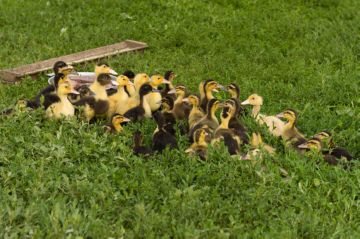

When feeding laying ducks 3 weeks before the expected clutch, the diet changes. The proportion of succulent feeds decreases, while the proportion of feeds with a high protein content increases. This is due to the fact that the body needs more calcium than usual during the laying period. Laying ducks should drink about a liter of clean water every day. If the bird is lightweight, then the food should be changed 1.5 months before the expected laying of eggs. Of the four feedings, three should be wet feeds. It is useful to give sprouted barley grains or oats at night. All food for layers must be yeast. To do this, it is necessary to dilute 20 g of yeast in water and combine 1 liter of solution and 1 kg of grain mixture. After which the composition should be infused for 8 hours at room temperature. This mixture can be mixed with any food.
Since the slaughter of ducks for meat occurs at 2-2.5 months, the fattening begins from the first days of the chick's life. In the first weeks, ducklings are given low-fat cottage cheese, boiled and crumbled eggs. Two weeks before slaughter, it is required to increase the amount of protein food. This will help you gain as much weight as possible in a short time. A week before slaughter, food rich in fats is given - for example, boiled potatoes. At the same time, fishmeal and fish in all types are excluded from the diet.
When feeding the parent flock, the emphasis is on grass. Birds are given a lot of greenery and sprouted grains. These products contain vitamins E, B, which are needed for the incubation of eggs.
How to feed wild ducks in different conditions? The question is really relevant, because birds living in the wild are adapted to a slightly different food than their domesticated counterparts.
Food addictions and capabilities of any animals are indicated by their oral apparatus. Ducks have a flattened beak. With its help, it is convenient to filter the water. Ducks in reservoirs dive to shallow depths, capture mud or algae, and then filter it all through their beak. On land, a flat beak allows pecking young grass shoots, pecking soft fruits.
In the wild, ducks feed on algae, plants, small fish.
Thus, in nature, ducks usually feed on:
- small aquatic organisms from insect larvae to small fish;
- algae;
- aquatic and coastal flowering plants;
- roots and rhizomes;
- fruits of terrestrial plants, etc.
This list means that ducks, despite their specific mouthparts, can be called omnivores.
How to feed a wild duck at home
The food of wild ducks living at home must necessarily consist of plant and animal components.
If you summarize all the diets, then feed mixtures for wild ducks can be prepared from the following ingredients:
- cereals: corn, wheat, barley, oat;
- different types of flour: alfalfa, herbal, sunflower, coarse wheat, legumes, bone as a source of animal proteins;
- sprouted grain of wheat, rapeseed, peas;
- cake, bran or meal from sunflower, rapeseed or soybeans;
- brewer's and baker's yeast (a good source of B vitamins);
- boiled vegetables: beets, potatoes, carrots;
- fresh chopped vegetables.
At home, wild ducks are fed with cereals, cake, boiled vegetables.
All of these mixtures can be prepared in different proportions and variations. The main condition is the presence of water near the feeder. After all, a duck needs to drink water all the time and rinse food in it.
Animal proteins can be given separately from vegetable-grain mixtures, or can be included in their composition. Usually at home, ducks are given various insect larvae (bloodworms, maggots), earthworms are well suited. You can grind non-fibrous meat and fish fillets through a meat grinder.
Cereals in mixtures usually make up 80%, grass and vegetables - about 10%, animal components - at least 10%.
In summer, the duck must be provided with the opportunity to swim in water bodies and graze in coastal meadows. If this is not possible, then finely chopped grass should be included in the duck's diet.
Why is it forbidden to give bread
Perhaps this is the product that causes the maximum harm to the bird. As a last resort, you can use a small amount of soaked bread crumbs to prepare a wet mash. But this is possible when there are no other products at hand to feed the ducks.
In addition to the above reasons, there are several other factors explaining such a ban:
- Under natural conditions, wild ducks do not consume any product that would be similar to bread. Not adapted to such a diet and their domestic species. Their body simply cannot cope with the digestion of cereal flour products.
- The composition of black and white bread contains a large amount of carbohydrates. Accordingly, ducks quickly gain weight from it.For poultry, this is even good, but for wild birds, it can lead to its early death.
If the duck eats not just bread, but a product on the surface of which mold is seen, this will lead to aspergillosis. The chances of getting sick with this ailment are small, but if this happens, it is almost always fatal. Aspergillosis is also a contagious disease that can lead to the death of an entire livestock.
How to feed ducks in a pond and water bodies
Before you start feeding them, you need to think - is it worth doing? If ducks live in a good natural reservoir, where there are many fish and shallow waters with mud and aquatic plants, then these birds will feed themselves.
The ducks that live in the water can be fed with berries and fruits.
It is another matter if there are too many ducks per unit of water surface, and the banks have lost their natural vegetation. In this case, artificial feeding is indispensable.
If the ducks have settled somewhere in a pond or in a lake away from the city's crowds, then you can feed them with the mixtures described above. If it is impossible to provide such feeding, you will have to feed the ducks right in the water.
In addition to bread, you can give in the pond:
- grated hard cheese, which does not immediately sink, so almost all of it is picked up by ducks;
- thick oatmeal (roll up balls and toss or serve directly into beaks);
- boiled vegetables in small pieces;
- fresh berries and fruits, cut into small pieces.
but the best option is special combined feed for duck.
They are produced in granules, so when they get into water, they do not immediately dissolve.
In winter in the city, when ducks refuse to waste energy on flights, the townspeople take care of the feathered "patriots". And rightly so, because in the non-freezing areas of city rivers, lakes and ponds, ducks cannot feed themselves naturally. Two-thirds of their food consists of what people give.
In winter, ducks are always fed.
In order for the ducks to live safely until spring and scatter to arrange their personal lives, they must be fed with a variety of foods. Animal feed is of particular importance. In this case, you can grind the fish fillet, mix it with compound feed, sprouted grains, oatmeal or porridge, and then roll this mixture into small balls. Any waterfowl will overwinter on such balls.
But ducks can die if they stay for the winter in a city in our latitudes?
Nina Sadykova: “There is a natural process of animals assimilating habitats suitable for them. Indeed, in our latitudes, most of the mallards lead a migratory lifestyle and can only hibernate in nature in exceptional cases - we read "Gray Neck" and "Sly Fox and Clever Duck".
In settlements on non-freezing areas of water bodies, stable wintering urban populations of ducks can form, which we observe in Yekaterinburg. They grow mainly not due to the fact that ducks from suburban populations stop flying away and join the urban ones, but due to the natural reproduction of the "urban" ducks themselves. That is, those ducks that now winter on the city pond are not the first generation of local non-migratory ducks that have successfully bred on the abundant "city grubs". The formation of such urban populations is possible only due to winter feeding, primarily with bread, and does not affect the number, composition and lifestyle of "country" ducks.
If we want ducks to live in our city and eat mosquito larvae in the summer, they need to be fed in winter. Moreover, to feed all the time when the air temperature is below zero and the reservoir is mostly covered with ice.
City ducks need feeding from the moment the main part of the water bodies is covered with ice, until the moment the snow melts.Even if the river freezes only near the coast - as, for example, on the Iset below the dam of the city pond - in winter, ducks, especially if there are a lot of them, will still need complementary foods, since natural food suitable for ducks is inaccessible in cold weather and their supply is replenished slowly.
How to feed wild ducks in winter
Feeding ducks in winter differs from other seasons in that the birds are not able to peck green grass or catch any living creatures in the pond. A person must replace the missing vitamins and animal protein with them. At home, the basis of the winter diet is a mixture of cereals and legumes.
Combined mixtures are prepared from the following ingredients:
- Corn. Universal food for many types of birds. It is better to use varieties with yellow grains. They have more vitamins.
- Wheat. It is high in protein and vitamins E and B. It is better to use wheat specially designed for pet food.
- Legumes. Most often, domestic birds are fed with peas; beans and beans are quite suitable for ducks. However, not all birds can peck large grains as a whole, so they will have to be crushed.
- Oats. It contains up to 5% fat and a lot of amino acids. This is especially true for winter conditions.
In winter, wild ducks are fed with a special grain mixture.
Attention! Mixtures of grain can be given dry, whole, or soaked. Be sure to germinate some of the grain. This will provide your ducks with vitamins by replacing green grass.
If you have to feed wild ducks by throwing them into the water, then it is better to choose peas from all cereals. It swims for a long time on the surface of the water and is quickly picked up by ducks. However, in any case, it is necessary to resort to feeding with special compound feed. There is already everything that domestic and wild ducks need.
What kind of food can harm you in winter?
What to feed ducks with
Although in winter, ducks eat the same food as in the warm season, only in a different concentration, there are a number of foods that can harm this time of the year even more than in summer. So, what to feed the ducks in winter was described above, and what should you not feed them with?
- Spoiled, rancid, moldy food.
- Ice water.
- Powdered flour (it can clog the bird's nasal openings).
- Abundance of dry food with a lack of water.
- Excessive feeding of vitamin and mineral complexes.
Food with dyes (this primarily concerns chalk).
Ducks are unpretentious poultry that gain weight well not only in summer, but also in winter. At the same time, you should not ignore the basic requirements of birds for comfort, and you will be fully rewarded with their high productivity. In general, keeping ducks in winter is not considered difficult, although certain features of this process should still be taken into account.
In the summer, the birds spend most of their time walking, feeding on pasture. In the cold season, it is impossible to provide them with such conditions, so you need to take care of a comfortable poultry house and well-equipped walking for livestock. In addition, certain features of the content are also distinguished in certain breeds, therefore the subspecies of birds should also be taken into account during winter breeding. All these aspects will be covered in today's article.
Found a chick - what to feed him
This usually happens in the second half of summer or autumn. This greatly simplifies the task.
The subtleties of feeding a foundling depend on his age:
- The duckling is still very small, yellow, from the cover there is only down. At this early age, you need to feed your baby with a steeply boiled and finely chopped egg. As it grows, dry cottage cheese and crushed cereals are added to the feed.
- If the bird already has a few feathers, it can process coarser food. Now the duck can be fed with crushed grain and finely chopped grass.
- 10 days after the fluffy lump came to you, the chick can be fed with boiled potatoes and chopped herbs.Can be combined with other boiled vegetables. The feed should be served semi-dry, since the duck is not yet able to clean its beak after the sticky mass.
- After the chick has completely replaced the fluff with feathers, it can be fed like an adult duck.
Little ducklings of wild ducks need a special diet.
You need to feed small ducklings every two hours. After 10 days of life - every three hours, then you can limit yourself to three meals a day. If you plan to raise your bird indoors, it should always have fresh water to drink. Periodically, the duckling needs to be fed with chopped duckweed and algae.
Is it possible to feed wild ducks with bread
Ducks hibernating in non-freezing city ponds are forced to eat bread in large quantities. This is the simplest food the townspeople can offer to birds. If the birds have no other source of food, then they find themselves in an extremely unhealthy situation. This is called "putting on bread and water."
Of course, some arthropods or small fish can swim in reservoirs even in winter. This can save ducks from vitamin deficiency and digestive problems.
With a bread diet in birds, fermentation processes develop in the intestines.
The more the ducks eat bread, the more they feel hungry. It is formed from vitamin deficiency and dysbiosis. This leads to the fact that the birds with great greed fill their stomachs with the same bread.
Experts do not recommend feeding wild ducks with bread.
Note. Such birds can survive until spring, but they will be weaker than their relatives arriving from distant countries, where they waited out the winter in natural conditions.
Features of winter food for ducks
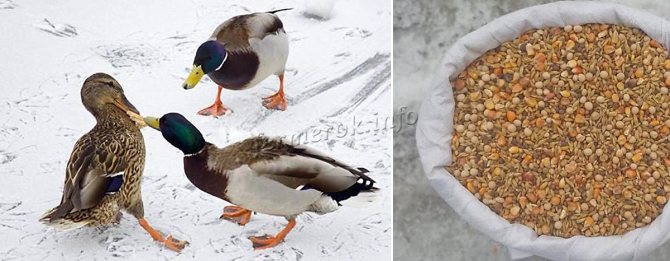

We feed the ducks in winter
How to feed ducks in winter? This question worries many breeders, but what is the difference between winter food and summer food?
- The main difference is the absence of greenery, which the birds ate in abundance in summer. Greens are a storehouse of vitamins and nutrients necessary for the normal functioning of a duck, therefore, in winter, you need to try to replace this product and those trace elements that it contains.
- Lack of regular walking can lead to an increase in the body weight of birds. Therefore, it is worth adjusting the diet so that the bird receives only the required amount of feed, no more.
- Winter is a time of cold weather, disease, lack of sunlight. All this usually negatively affects the bird, its health and appearance, but improved, fortified nutrition can correct this situation.
This, in general, is all that is important for a breeder to remember when determining the diet of ducks in winter. If you do not forget about these three points, you can not only improve the appearance of birds during the winter, but also increase their productivity and the immune system.
What you can't feed wild ducks and chicks
Ducks cannot be fed with bread. Moreover, any and in large quantities, especially muffins and black bread are prohibited. You can not feed ducks at any age with fatty foods. Fried seeds, peanuts, and fatty dairy products are prohibited. Cottage cheese is given only to little downy ducklings.
And even more so do not throw everything you eat into the water
... Ducks can pick up a product that is known to be harmful to them. Moreover, food in water quickly deteriorates, as a result, birds eat food contaminated with fungus or putrefactive bacteria.
By feeding the ducks, a person believes that he is helping these birds in difficult times. However, this is not always the case. It is necessary to feed properly not only domestic, but also wild ducks. Otherwise, your concern can lead to the death of birds.
What do wild ducks eat? This is a very important question that does not occur to everyone who has ever fed birds on city ponds. And not many people pay attention to the posters calling not to feed the waterfowl.
Habitat
Since mallards are considered the most common in our country, then we will talk about them. Those who want to know the name of the grass that the duck eats will probably be interested in what conditions these birds live in. The traditional habitat of the wild mallard is considered to be shallow open water bodies of artificial or natural origin. These can be stakes, rivers, lakes or ponds, around which thickets of reeds or bushes grow.
Wild waterfowl ignore rocky and barren shores as there is no suitable nesting site. In winter, mallards migrate to regions with warm climates. However, they can live peacefully throughout the year on non-freezing water bodies.
What do wild ducks eat?
The largest and most noticeable duck on the city pond is the mallard. Representatives of this species are most numerous in any body of water. They are almost not afraid of humans and sometimes take food from their hands.
In nature, these ducks, like other waterfowl, feed mainly on plant foods. The diet is based on aquatic plants (algae, duckweed, moss) and grass growing along the banks of the reservoir. In autumn, birds often visit mowed fields, where they collect grain residues.
Dwelling near the water, ducks have the opportunity to eat various aquatic fauna:
- shellfish;
- fish fry;
- tadpoles and frogs;
- invertebrates living in silt and wet soil of the coastal strip (worms, beetles, larvae, etc.).
During the breeding season of frogs, amphibian caviar is also added to the diet.
Wild ducks are rich in fiber and protein. An insignificant part of the diet is taken by seeds of wild herbs and cultivated plants. In winter, wild ducks migrate to regions where shallow ice-free water bodies and common food can be found.
Let's summarize
It is possible and necessary to feed city ducks on reservoirs in winter. Whether with bread, cereals, vegetables or grated cheese - as you like. It is enough to collect and feed them suitable edible leftovers and surpluses: stale bread, cookies that turned out to be tasteless, cereals spoiled by a bug, etc. Like people, like any other living creature, ducks will not survive if they are fed ONLY one bread, but in our urban environment this is impossible.
It is better to throw food into the water - it is warmer in the water for ducks. You can mix the rest of the ingredients with the bread so that everything floats to the surface. In summer, according to Nina Sadykova, “ducks do not need additional feeding and may well get by with natural food, although many of them habitually stay close to feeding places. If we bear in mind that in summer ducks can actively participate in the natural cleansing of the reservoir - it is not worth feeding them, let it be better to “work”: they eat out duckweed, larvae, etc. ”.
It is also impossible to feed ducks, and other city birds in the summer, because at this time they breed chicks, which are only harmed by abundant free food. For healthy growth and development, it is better for young animals to eat natural food and learn to get food themselves, and not just beg for crumbs from people.
But what really should not be done in any case is to throw the bag in which they were brought after the crumbs, and generally throw the used plastic packaging anywhere. Animals, including ducks, often die by accidentally swallowing or entangled in plastic scraps.
Is it possible to feed wild ducks with bread
Increasingly, migratory birds spend the winter in the same city ponds where they spend the summer. This is partly due to the fact that winters have become warmer and the ponds for ducks in the park are practically not freezing. But more often, wild ducks stay in the city for the winter due to the availability of food.
They get used to getting food from people actively feeding supposedly starving birds. Indeed, ducks greedily rush for every piece of bread and even fight over food.But this instinctive behavior is formed even in juvenile age, when the survival of ducklings directly depends on the ability to compete. In summer, there is enough food for birds even in a relatively clean city pond. If necessary, the bird would fly away to the abundant feeding grounds.
For their own entertainment, vacationers throw pieces of bread, pies or rolls to a water bird. Ducks react with interest to a new object, tasting it. Having found that it is edible, they actively eat the proposed food, which does not need to be obtained on their own. People interpret the attention of birds to a piece that has fallen into the water as a sign of hunger and begin to purposefully feed them.
But a mass containing a minimum of fiber, fat, yeast and a large amount of salt is very poorly digested by the duck stomach. Bread swollen in the digestive system is practically not processed by the digestive tract and is excreted very slowly, interfering with the normal nutrition of the ducks. Rye breads (Borodino, hearth, Poltava, etc.) are a real danger to duck health. By causing fermentation in the intestines, this food poisons the body.
But the most terrible consequence of feeding a wild bird is its unwillingness to fly away for the winter from places where food can be obtained at any time and without difficulty. In the wild, the signal for the beginning of migration is not only the length of daylight hours, but also a decrease in the amount of available food. On a pond within the city, where vacationers feed the ducks until winter, the birds do not feel the need to fly.
With the onset of cold weather, when there are fewer breadwinners, and the coastal zone of the pond is covered with ice, the ducks can no longer fly anywhere. Exploring the surrounding areas, they do not find acceptable conditions for existence and return to their pond. With the onset of severe frosts, some of the birds die, freezing into the ice or becoming the prey of stray dogs. And even in warm winters, they can start starving for real, unable to get food in the shallow water near the coast.
Behind the word is the deed. Personal experience.
Let's see if the city ducks appreciate healthy food. We boiled barley, millet and carrots in advance. The tasting was held in the Arboretum. It was harsh -20C outside.
Yeah, these guys.


We pour out some of the prepared on the shore next to the water so that nothing drowns.
Commentary by Nina Sadykova: “It is more convenient for ducks to take food from the surface of the water, especially in severe frost. Indeed, in water they remain in relative heat: the temperature of liquid water, as is known, does not drop below 0C at the surface. And on land at this time it can be -20, and -25. Wet boiled cereal drowning in water or freezing to the shore is clearly not an optimal solution for winter feeding. It is optimal to choose something that can be thrown into the water and it will float there for a while on the surface, gradually getting wet. That's right - crumbled bread, crackers, buns, cookies, sandwich or some cereal. "
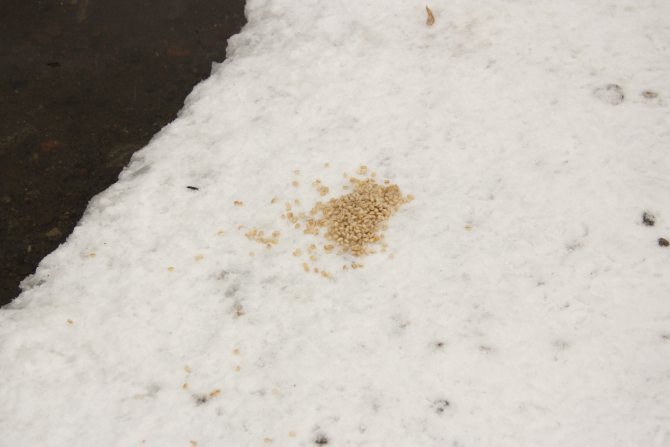

The ducks were interested, but the pigeons were even more interested. By the way, there is no need to feed them at all, they themselves perfectly find food for themselves.
"Come on, go away, scoundrels, this is not for you!"
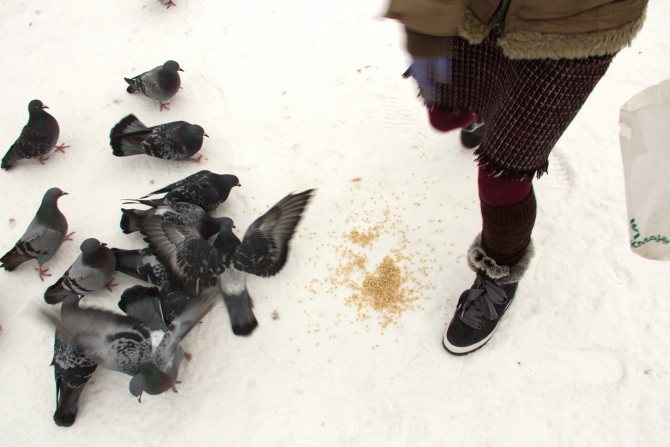

The feathered beggars won - we had to add distracting heaps for them.
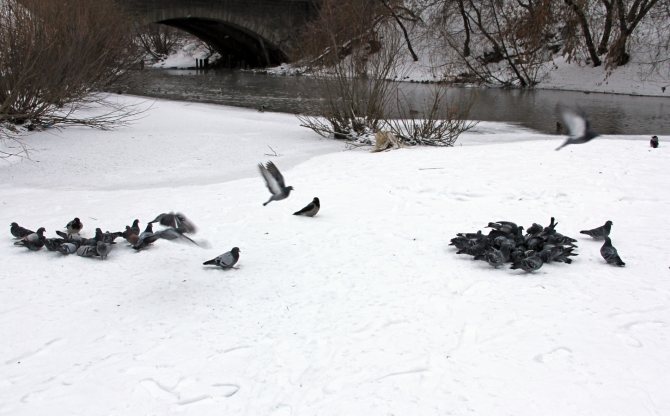

However, ducks are immediately caught for food in the water - here the river is not deep at all. It is not at all necessary to lay it out on the shore. And it’s not worth it, as it turned out.
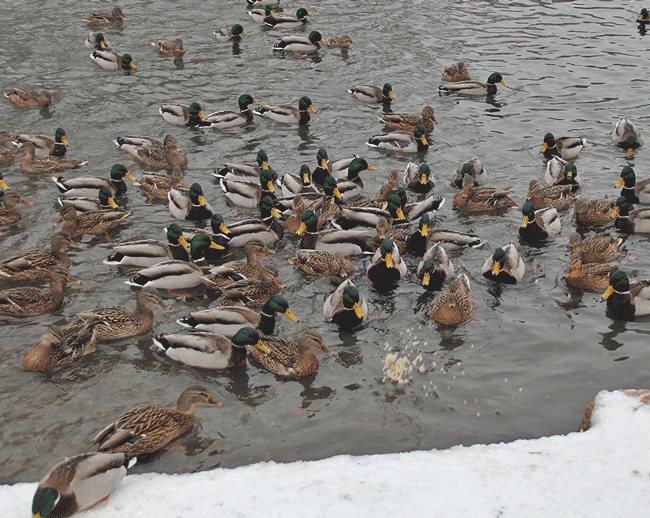

They took pearl barley and millet with a bang, only it cracked behind the ears.
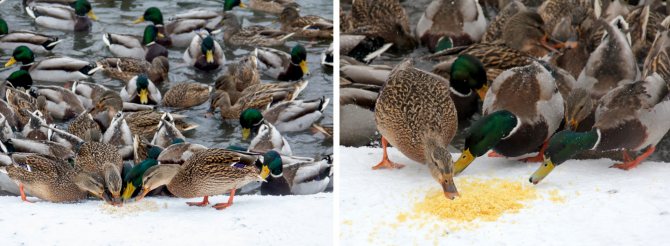

But the carrot was left completely without duck attention - either on the shore or in the water. The ubiquitous pigeons pecked at the groats, but the vegetables themselves did not touch either.
Commentary by Nina Sadykova: “Ducks don't need carrots in winter, because they are not nutritious, so they were not interested in it. Eating a “healthy” carrot instead of a hearty bun, standing with bare feet in the snow in a 20-degree frost is not a good idea, understandable for both the duck and the pigeon. "
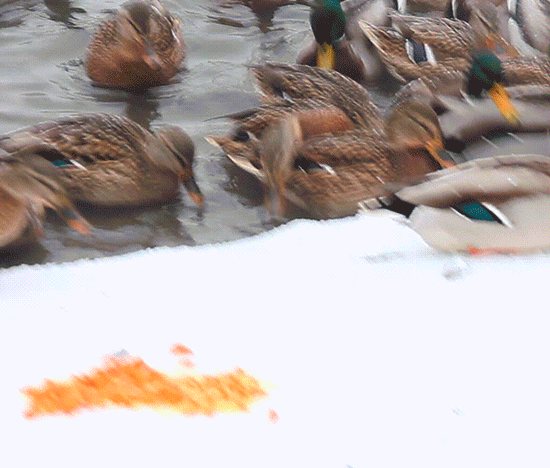

How to help ducks in winter
In zoos, in winter, waterfowl are fed with specially prepared food. They include all the nutrients (protein, carbohydrates, fats) that ducks can get from their usual food. But the compassionate townspeople continue to feed the ducks remaining for the winter with baked goods and leftover bread.
Not receiving the necessary nutrients, the bird weakens and becomes more vulnerable to cold and disease. Trying to help starving waterfowl, a person most often causes them irreparable harm. How to feed ducks in winter to really help them survive the harsh cold weather?
It is advisable not to give the bird baked goods. Ducks will eat, but they will not be able to get anything but harm from such food. You can prepare high-quality food for ducks of different species that have overwintered on the pond. It can be based on whole grains (oats, barley, wheat) or pearl barley, oatmeal, whole grain crushed (corn, barley, wheat). In no case should you feed poultry with semolina and rye (rye flour) in pure form. These feeds can be included in the composition of the grain mixture in an amount of not more than 10% of its volume.
Protein constituents of poultry feed can be as follows:
- fish or meat waste;
- egg;
- meat, fish, bone meal;
- bone residue in the form of minced meat (sold in grocery stores);
- peas;
- cake or sunflower meal, soybean, rapeseed;
- low-fat cottage cheese.
Meat or fish waste should not contain large bones. They can be fed raw or cooked. Egg before feeding should be hard-boiled and chopped together with the shell.
Protein components are mixed with grain feed. Grain for ducks can be pre-boiled or steamed, but in severe frosts it is better to give it dry so that the food does not have time to freeze. Whole grains can be germinated before feeding until green sprouts 1-2 cm long appear. In such a feed, the content of vitamins and biologically active substances, which are lacking in the winter diet of birds, significantly increases.
Vitamin feed for wild ducks
But what to feed the wild ducks to enrich their diet with the fiber and vitamins they need? For water birds wintering in urban water bodies, you can also prepare the following food:
- dried nettles, clover, alfalfa, dandelion;
- any root vegetables;
- pumpkin or zucchini;
- fresh cabbage.
Dry herbs in summer can be cut and dried in small bunches in the shade to retain more of the beneficial vitamins. Everything else can be grown in a personal garden or bought specifically for poultry in a grocery store. But it is much more economical to use the leftover vegetables that the townspeople are used to throwing away. Peelings from potatoes, trimming carrots and beets, unwanted leaves of white or Peking cabbage, lettuce, yellowed dill or parsley, watermelon and melon peels, zucchini seeds and much more will be eaten by ducks.
Some vegetables need to be chopped before feeding. This applies to hard root vegetables and raw potatoes. Since birds have no teeth, they cannot chew on hard vegetables, and the flat beak of ducks prevents them from pecking at carrots or beets. Therefore, all root vegetables with a dense structure must be grated or raw or boiled through a meat grinder. The same should be done with zucchini, pumpkin, watermelon rind.
Leafy vegetables such as cabbage can be given as a whole. Ducks do well with them, tearing off small pieces. Dried grasses or bunches of hay do not grind either.
Closer to spring, vegetables begin to sprout even in a cold cellar. Young leaves of carrots or beets will suit the taste of ducks. Trimmed tops of root vegetables or green feathers of onions and garlic will be very useful in a vitamin-poor winter diet of birds.If you wish, you can specially germinate small roots by planting them in a box with wet sand, sawdust, soil, and then feed the ducks with fresh herbs.
Mineral dressing
When compiling a winter diet for ducks, one should not forget about useful minerals. Part of the calcium and phosphorus needed by the bird in natural conditions is obtained from the bones of fish and frogs, the shells of snails and crustaceans that feed in the pond.
With artificial feeding, you can include crushed egg shells in the diet. It is convenient to use feed chalk or shell rock (sold in pet stores). When including meat and bone meal as a protein source, additional mineral additions are optional.
Do not forget about the addition of gravel or coarse river sand, which is special and important for all birds. For ducks, the size of the pebbles can be about 0.5 cm. As such a top dressing, it is recommended to use marble chips, and ASG, and natural river sand for the aquarium. Duck gravel can be added to the feed mixture in the amount of 5% of its volume or periodically poured into a special container. The pebbles help the birds grind food in the stomach.
Proper feeding of wild ducks in winter can be of real help. Having survived severe frosts, large and beautiful birds will continue to enliven the park's landscape next summer.
For the ducklings to grow up quickly and gain good weight, they should be properly fed from the first hours of birth. For the growth and development of birds, protein, carbohydrates and minerals are needed. Poultry is unpretentious in food, eats almost everything, even waste from the table. The diet is selected balanced in order to prevent damage to various diseases. You should not limit pet food to grass and vegetables, as they need protein for growth and development, minerals, carbohydrates. And this speaks of mixing different grains in the preparation of feed. It should be at least 60% of the total feed.
- Show all
Independent production of compound feed
If you do not want to spend money on finished products, you can make compound feed yourself. The result is a mixture of no less quality than the one presented in the store.
The cooking process includes the following steps:
- Choosing a recipe. In the future, the ingredients are prepared in the required proportions.
- Crusher processing of main ingredients such as corn, grain, bran. They can be crushed individually or used in mixed form.
- Stirring the finished mixture to ensure homogeneity. To do this, you can use a stirrer or a household mixer. But you can do all this manually. True, you will have to spend a lot more energy so that all the ingredients are evenly distributed.
- Adding small amounts of auxiliary components such as chalk and salt separately. If you are using a mixer, it is enough to stop this device for a few minutes, add a specific ingredient, and then turn it on again.
- Adding flour, if present in the recipe. It should be poured last.
- Pouring the resulting compound feed into the granulator. You can do without this device, but poultry is much more willing to eat food in the form of granules, rather than powdered.
How to feed ducks?
From birth to slaughter, one bird eats about 8-9 kilograms of grain. Slaughter is carried out at the age of 9 weeks. One kilogram of body weight is spent about 2.5 or 2.8 kilograms of food.
Birds love grass and vegetables. But food cannot consist only of them, since animals must also feed on grain. The feed should contain about 65-70% grain.
In order for the bird to gain weight, it must not be left without feed. Hungry, they will crush, maim each other and spoil the food, pounced on the food trough and trampled the food.
What to feed?
For poultry to gain weight prior to slaughter, ducks need to be properly fed.To do this, you need to know which foods contain minerals and vitamins that contribute to weight gain. Let's take a look at some of them:
barley;
Corn. It contains 3% fiber, and the fiber is quickly absorbed. Corn should be given more often, half of the diet may be corn.
Barley. At home, they are crushed in an electric mill. The crusher is suitable for feeding both small ducklings and adults. 30% of the feed can be barley.
Wheat. It is rich in vitamins B and E and also contains a lot of protein. It can be given whole and ground - mixed into mash with other crops or with boiled potatoes.
Oats. Promotes rapid growth and weight gain at the time of slaughter, because it contains fat, protein. The share of peas in the grain mass is 10%. Peas should be given crushed.
The use of peanut, cotton, rapeseed, sunflower meal will help supplement the diet of poultry with fats, protein, potassium and phosphate. These foods contribute to the weight gain of the birds. 110 part of the feed consists of meal and cake.
Bran is a cheaper product than cereals. But their value does not decrease, since the aforementioned mass contains up to 10-12% protein. 20% of the feed is bran. This ratio is considered normal for the development of pets.
Bakery and brewer's yeast will saturate the body of ducks with vitamin B. Dry bread is given after soaking it in water. In summer and autumn, ducklings are driven out onto the green grass. They, like wild relatives, love to nibble on greens. During the day, adult birds eat up to 1 kilogram of various herbs - duckweed, elodea and others. It is advised to mix crushed clover, alfalfa, young nettle, field bindweed, spurge into the feed. Give this mixture from a week of age.
Wipe vegetables before use. Rub carrots, cabbage or pumpkin, zucchini. It is possible to fill the food of the ducklings with grated apples. They contain iron, glucose, carbohydrates, which are necessary for the growing body of ducks. To improve digestion, mineral supplements are used: chalk, bone meal, shells, table salt, crushed egg shells, gravel or river sand.
Fish oil strengthens the immune system of birds and is a prophylactic agent against infectious diseases. It helps absorb calcium and build strong bone mass.
What shouldn't be given?
Finely ground flour should not be given, as when consumed, it sticks together, closing the airways, which leads to breathing problems. Aspergillosis occurs when ducks are fed moldy bread or grains. Therefore, only fresh produce should be purchased. Milk porridges are dangerous, as they quickly deteriorate and cause disorders of the digestive system.
Fresh milk quickly turns sour, causing diarrhea in young animals and even in adult ducks. Poisonous plants must not be allowed to enter the feed,
such as celandine, cocklebur, black henbane, poisonous milestone and others. Nettle
,
used entirely, burns the walls of the stomach, causing irritation. The bird may die. Nettle scalded with boiling water is safe. Maple leaves, bird cherry flowers cause allergies in birds. Even the smell of bird cherry can destroy them.
Useful and unhealthy foods
It is necessary to clearly distinguish between healthy and unhealthy products for ducks in order to avoid a reduction in the number of livestock.
The list of foods useful for duck consists of:
- Cereal crops. Wheat, barley and oats are rich in protein and vitamins. They are great for feeding ducks. Chicks should not be fed barley due to the presence of a hard shell. But for adults, on the contrary, it is useful, as it improves intestinal motility.
- Corn. It is extremely beneficial for the growing body. It is desirable that this component constitutes 50% of the total diet of chicks during the daytime.
- Greens. You can offer the bird finely chopped green grass, beet tops, nettles, pre-treated with boiling water. Duckweed growing on water also has nutritional properties.
- Beans. Peas are most often used as they are the most readily available. Legumes are a source of protein.
- Meat and fish meal. It is a source of valuable minerals such as calcium and phosphorus. Flour is also rich in proteins.
- Milk products. The main one is cottage cheese. On its basis, you can prepare a wet mash. Instead of water, you can take milk or whey for it.
- Vegetables. The duck body reacts excellently to mashed carrots and cabbage. However, care should be taken with melons.
- Bran and cake. These foods should be given in moderation. They should make up no more than 10% of the total diet. They contain protein and fats, useful trace elements.
- Coarse sand, chalk, egg shells. A good diet always includes these ingredients, as they are sources of calcium. Still, you can give them in limited quantities.
- Table salt, mineral dressings. Very useful if given in small quantities. It is better to dissolve the salt in water so that it does not irritate the gastrointestinal tract. It should account for 0.2% of the total nutrition.
There are also such types of food that must be excluded:
- Bakery products, muffins. Harm to most birds, and not only domestic ones. They can clog the stomach, provoke fermentation in the intestines.
- Crackers. There is an opinion that dried bread is not harmful. Even the oldest biscuit can swell in the stomach. It is enough for him to spend a long time in it. This probability is minimal compared to freshly baked bread, but it is still present.
- Cereal flour. Has the same effect as bread, buns and more.
- Ready-made cereals, especially those cooked in milk. They are classified as perishable foods, and therefore pose a potential health hazard to the duck.
- Zucchini and pumpkin. Most vegetables are well tolerated by ducks, while melons can harm them. The fact is that they have a laxative effect. Zucchini and pumpkin remove calcium from the bird's body. As a result, her gait becomes unstable.
- Any food that has mold. They can provoke a dangerous disease - aspergillosis. This is why it is important to remove any food particles that have accumulated in the feeding areas in a timely manner.
- Maple leaves, poisonous plants. They are equally harmful to both humans and birds.
Homemade food recipes
This is not a complete list of recipes for feeding poultry. We present only a few of them so that housewives can cook them on their own and have an idea of the amount of added ingredients:
| Age of birds | Feed composition | How much to add to feed, in grams | Total for one head per day |
| From birth to 10 days | Wheat grating / Maize grating / Millet / Boiled egg / Milk powder / Fish oil / Meat and bone meal / Bone meal / Fish meal | 5g / 8g / 3g / 10g / 2g / 0.3g / 1g / 0.5g / 1g | 30.8 grams |
| 11th to 30th days | Wheat dash / Corn dash / Grain mixture / Millet / Fish oil / Fish meal / Bone meal / Meat and bone meal / Shells / Sunflower meal / Hay meal / Yeast / Salt / Chalk | 30g / 40g / 15g / 8g / 1g / 9g / 2g / 6g / 1g / 6g / 6g / 4g / 0.5g / 1.5g | 130 grams |
| Between the 31st and 51st days | Grain mixture / Wheat grains / Maize grains / Millet / Barley / Bone meal / Fish meal / Shells / Sunflower meal / Yeast / Hay meal / Chalk / Salt | 50g / 20g / 70g / 19g / 5g / 2g / 12g / 5g / 12g / 6g / 15g / 3g / 1g | 220 g |
Hello Sasha!
Bird watchers believe that waterfowl ducks do not need to be fed. Living in the reservoirs of parks, birds feed on active silt, eat larvae and algae, do not disdain the remains of aquatic plants and feast on all kinds of small invertebrates. Especially ducks love water donkeys and amphipods.
Being fed by humans, the birds "relax": they lose their natural instincts to search for food, do not look for favorable natural conditions (do not fly to the south) and are tamed, which is dangerous for them. On such a reservoir, as a rule, more ducks accumulate than it can feed. As a result, all the numerous birds - inhabitants of the pond - do not have enough food in this ecological system. They are completely dependent on the person. They disrupt the work of the digestive system, and with the onset of cold weather, ducks who have lost the habit of feeding on their own die.
How does the diet change depending on the season
Feeding patterns and the amount of food and feed used vary with the seasons. Let's find out how and why.
Spring
This is a transitional period: if in March - the first half of April, small amounts of silage, grass meal, and sometimes steamed hay are present in the diet, then closer to mid-May such strengthening feeds are replaced by the emerging greens.
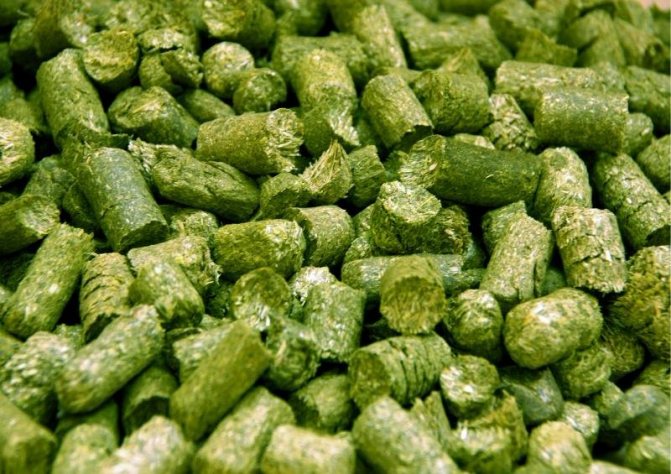

Did you know? The ducklings do take for the mother the first creature they see after they hatch from the egg.
In order for the bird's nutrition at this time to be balanced, they are guided by the following food consumption rates (hereinafter indicated in grams):
- cereals (in grains or as garbage) - 180;
- wheat bran - 25;
- greens - up to 100 (as they appear);
- carrots - 60;
- boiled potatoes - 40;
- cottage cheese - 15;
- shells - 6;
- bone meal - 3;
- fishmeal (or fresh minced meat) - 10;
- hay flour - 15;
- chalk - 3;
- salt - 1-1.5;
- gravel (screening) - 2.
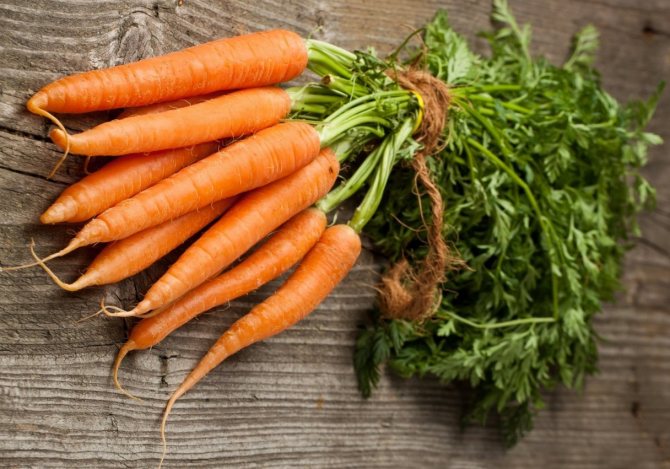

The number of feedings for birds in the pen is 4 times a day (2 - in the form of wet feed with greens, and 2 more - grain mixtures and mixed feed).
Summer
For birds, this is the peak of gastronomic diversity: the season of greenery and grazing is in full swing, and if there is access to the pond, then it is generally wonderful. But in any case, you should not transfer the ducks to self-sufficiency - the feeder must necessarily contain:
- cereals (in grains or as garbage) - 190 g;
- wheat bran - 25;
- greens - 120;
- cottage cheese - 15;
- shells - 5;
- bone meal - 2;
- fishmeal (or fresh minced meat) - 15;
- chalk - 3;
- salt - 1.5;
- gravel (screening) - 1.
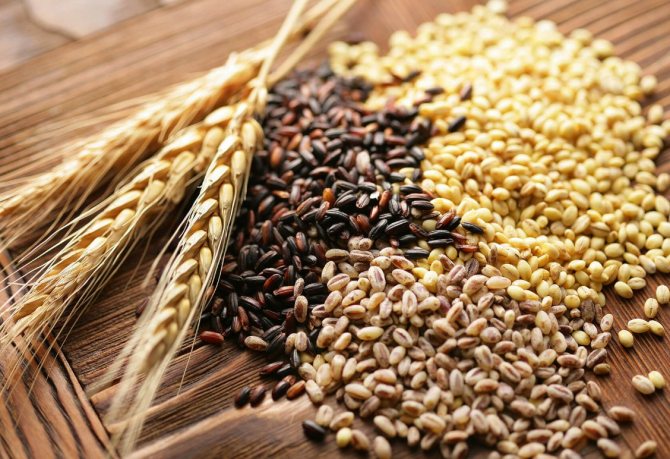

The abundance of greens allows you to temporarily remove boiled vegetables and an additive in the form of hay flour from the diet - an armful of fresh grass will more than cover the need for the necessary elements.
Fall
If in September it is still possible to hold out on stocks of greens, then as the snap falls, they switch to enhanced feeding - the remains of silage, boiled and crushed beets, grain mixtures with mineral additives.
Important! Portions are placed in feeders with a small margin: if you place too much additive, the feed can sour or ferment, which is fraught with the appearance of infections.
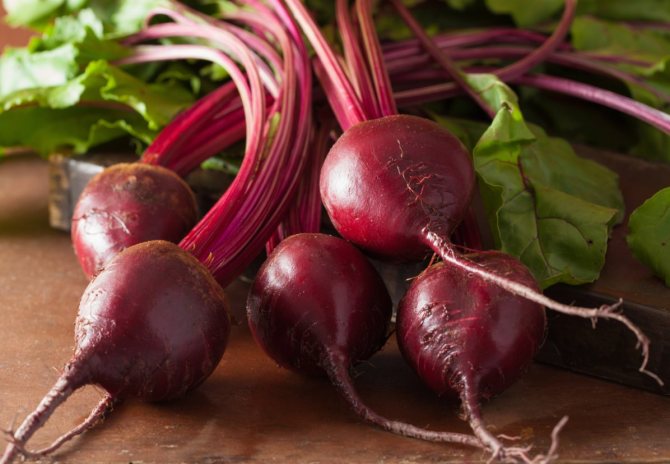

The standard daily consumption calculation takes the following form:
- cereals (in grains or as garlic) - 170 g;
- wheat bran - 35;
- greens - 150;
- beets - 70;
- cottage cheese - 8;
- shells - 6;
- bone meal - 1.5;
- fishmeal (or fresh minced meat) - 8;
- hay flour - 5;
- chalk - 3;
- salt - 1.5;
- gravel (screening) - 1.
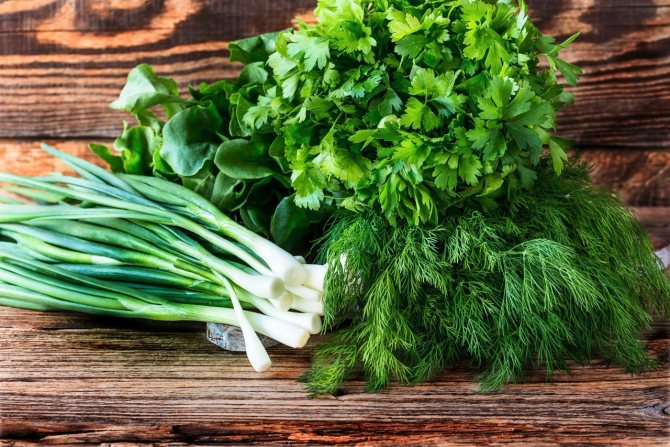

In general, ducks tolerate autumn days well, but in winter they need special care.
It will be interesting to learn how to raise ducklings in an incubator and how to pluck a duck without hemp.
Winter
The list of ingredients (with the exception of the greens that were missing by that time) remains the same, but different numbers appear in it:
- cereals (in grains or as garbage) - 180 g;
- wheat bran - 40;
- carrots - 80;
- boiled potatoes - 60;
- beets - 30;
- cottage cheese - 10;
- shells - 6;
- bone meal - 3;
- fishmeal (or fresh minced meat) - 1;
- hay flour - 18;
- chalk - 3;
- salt - 1.5;
- gravel (screening) - 2.
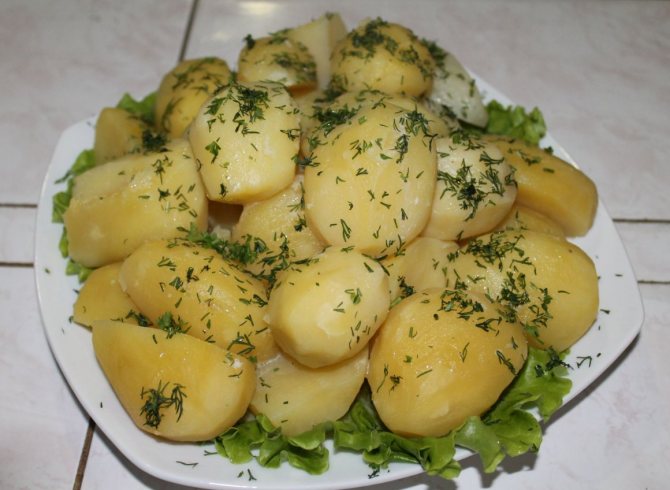

The increase in the proportion of some feed occurs for an understandable reason. If in the warm season the influx of nutrients is spent on growth and activity, then by winter there is another "expense item" - warming the bird.
How can you feed ducks in the reservoirs of park areas?
Nevertheless, the townspeople are especially happy to feed waterfowl, as well as pigeons, sparrows and other birds that live in the park.Then you need to do it correctly:
- The feed must be dry.
- Fresh bread should not be offered to birds. Fresh "Borodinsky" is especially dangerous. It causes heavy fermentation in the stomachs and intestines of birds. Fresh white bread should also not be given.
- It is forbidden to feed ducks with fatty, dairy products, peanuts and fried seeds.
- Moldy food causes fungal diseases in birds.
- Feed the birds all kinds of grains. Use lightly boiled pearl barley, barley will do. A good option is a stale roll. There will be no harm to the birds from the "Selskoe" bread either.
- Sprouted wheat grains are a real health elixir and a treat for birds. They are especially valuable in winter.
- If you often feed ducks with pleasure, get some compound feed. It can be purchased at markets or specialized outlets.
- You can offer the ducks treats: earthworms, soft fruits and vegetables cut into small pieces (for example, grapes need to be cut in half), crushed grains, grated cheese. Of fruits, ducks like apples, strawberries and bananas. Vegetables can be boiled.
- Ducks will not refuse from a mixture of cottage cheese, finely chopped grass and grains.
- It is best to leave food on land near a pond. After all, uneaten food rots.

